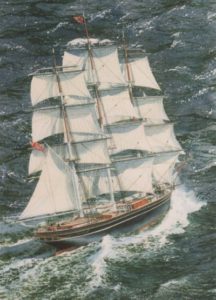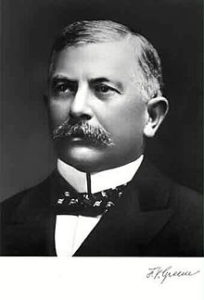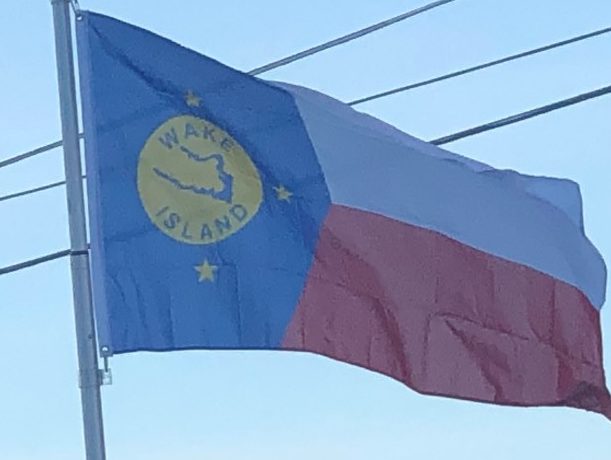
On August 31 “the weather was very thick, and it was blowing a heavy gale from the eastward, attended with violent squalls, and a tremendous sea.” At 10:30 p.m. breakers were seen and the ship struck the reef at Wake Island. Due to a lack of both food and water the crew set sail for Kosrae in the Caroline Islands which they reached safely 31 days later.
American Possession:
With the annexation of Hawaii in 1898 and the seizure of Guam and the Philippines during the Spanish–American War that same year, the United States began to consider unclaimed and uninhabited Wake Island, located approximately halfway between Honolulu and Manila, as a good location for a telegraph cable station and coaling station for refueling warships of the rapidly expanding United States Navy and passing merchant and passenger steamships. On July 4, 1898, United States Army Brigadier General Francis V. Greene of the 2nd Brigade, Philippine Expeditionary Force, of the Eighth Army Corps, stopped at Wake Island and raised the American flag while en-route to the Philippines on the steamship liner SS China.

On January 17, 1899, under orders from President William McKinley, Commander Edward D. Taussig of USS Bennington landed on Wake and formally took possession of the island for the United States. After a 21-gun salute the flag was raised.
Although the proposed route for the submarine cable would be shorter by 137 miles, Midway and not Wake Island was chosen as the location for the telegraph cable station between Honolulu and Guam. Rear Admiral Royal Bird Bradford, chief of the U.S. Navy’s Bureau of Equipment, stated before the U.S. House of Representatives Committee on Interstate and Foreign Commerce on January 17, 1902, that “Wake Island seems at times to be swept by the sea. It is only a few feet above the level of the ocean, and if a cable station were established there very expensive works would be required; besides it has no harbor, while the Midway Islands are perfectly habitable and have a fair harbor for vessels of 18 feet draught.”
On June 23, 1902, USAT Buford, commanded by Captain Alfred Croskey and bound for Manila, spotted a ship’s boat on the beach as it passed closely by Wake Island. Soon thereafter the boat was launched by Japanese on the island and sailed out to meet the transport. The Japanese told Captain Croskey that they had been put on the island by a schooner from Yokohama in Japan and that they were gathering guano and drying fish. The captain suspected that they were also engaged in pearl hunting. The Japanese revealed that one of their parties needed medical attention and the captain determined from their descriptions of the symptoms that the illness was most likely beriberi. They informed Captain Croskey that they did not need any provisions or water and that they were expecting the Japanese schooner to return in a month or so. The Japanese declined an offer to be taken on the transport to Manila and were given some medical supplies for the sick man, some tobacco and a few incidentals.
